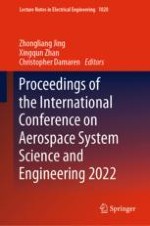The book collects selected papers presented at the 6th International Conference on Aerospace System Science and Engineering (ICASSE 2022), organized by Shanghai Jiao Tong University, China, and hosted by University of Toronto, Canada in July 2022. It provides a forum for experts in aeronautics and astronautics to share new ideas and findings. ICASSE conference has been organized annually since 2017 and host in Shanghai, Moscow, and Toronto in turn, where the three regional editors of journal Aerospace Systems are located.
This book presents high-quality contributions in the subject area of Aerospace System Science and Engineering, including topics such as: Trans-space vehicle systems design and integration, Air vehicle systems, Space vehicle systems, Near-space vehicle systems, Opto-electronic system, Aerospace robotics and unmanned system, Aerospace robotics and unmanned system, Communication, navigation and surveillance, Dynamics and control, Intelligent sensing and Information fusion, Aerodynamics and aircraft design, Aerospace propulsion, Avionics system, Air traffic management, Earth observation, Deep space exploration, Bionic micro-aircraft/spacecraft.
